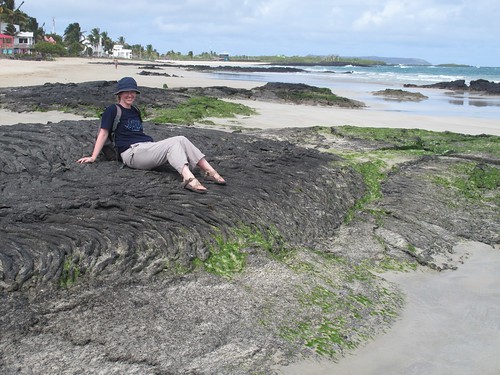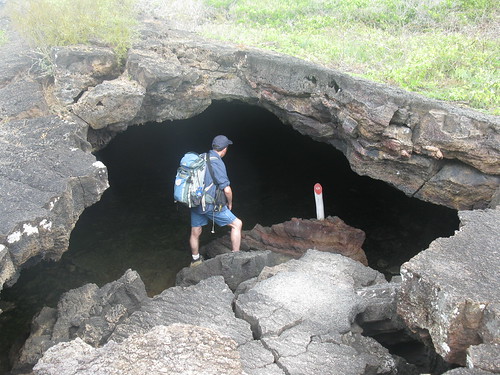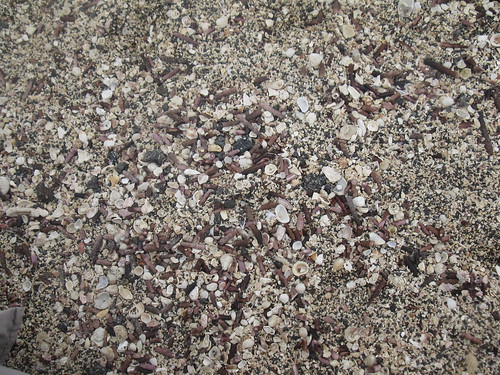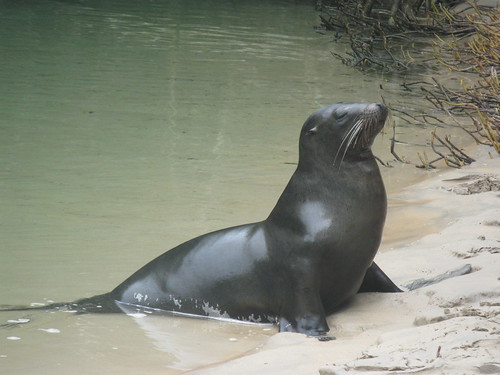Scenic Saturday: Ropy pahoehoe on a biogenic beach
Cross-posted at Highly Allochthonous
In this inaugural Scenic Saturday post, I offer up very happy volcano/landscape nerd enjoying the stunning geologic scenery on Isabella, Galápagos Islands, July 2011. I was there as a participant in the Chapman Conference on the Galápagos as a Laboratory for the Earth Sciences. I may manage to blog in more detail about the islands and the conference, but for now enjoy the scenery, just as I did on my first few days in the archipelago.
In the image above, I’ve got my back to the village of Villamil, on the southern flank of Sierra Negra volcano, and I’m actually sitting on some of the oldest exposed lavas from that volcano. You’re looking at the crust of a pahoehoe flow that is probably about 5000 to 9000 years old. A short distance up the beach, I could peek under the skin of the lava and walk a few meters into a lava tube. The floor of this lava tube was below sea level and covered by sea water, so this was really a chance to experience the water table in a very macro-pore.
The lava along this stretch of seafront is largely covered by sand that is clearly not basaltic. Instead it is made of little bits of broken shells and sea urchins from the incredibly rich marine ecosystem that surrounds the islands.
Elsewhere, the biogenic beach was covered by rather more living parts of the marine ecosystem. This sea lion put on a quite a performance for some appreciative visitors to a mangrove lagoon (and freshwater spring).




